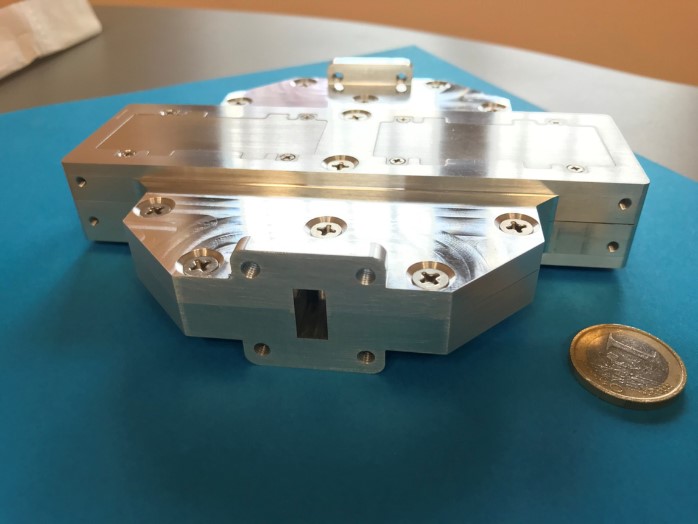How ESA supported the demonstration of spatially combined amplifiers across Ka and Q Bands

The European Space Agency (ESA) remains a key supporter of advanced satellite technologies, as shown through the "Spatial Power Combining Amplifiers at Ka and Q/V Bands for Telecom Satellites" project. The successful project marks the demonstration of spatially combined amplifiers in a single waveguide across Ka and Q frequency bands, a testament to the collaborative potential of European space innovation.
The project was developed by an Italian consortium, led by ST4I – Space Technologies for Innovation, who worked in partnership with MITEC, NHOE and Systems Development & Support S.r.l. Driven by ESA’s Connectivity and Secure Communications directorate through its Advanced Research in Telecommunications Systems (ARTES) Competitiveness and Growth programme, supported by ASI (Italian Space Agency) the project worked to develop a new approach to satellite power amplification that aims to enhance reliability of power amplifiers in satellite-based communications.
ESA has been instrumental in supporting the de-risking this technological development, providing the support necessary to transform an innovative concept into a tangible technology. The technology developed worked to address two critical challenges in satellite payload design: reduction in size and system reliability.

Traditional satellite power amplifiers have been constrained by bulky designs and high-power consumption. The new spatial power combining amplifiers (SPCAs), crafted using advanced Gallium Nitride on Silicon Carbide (GaN on SiC) technology, represent a step forward in engineering. These technologies are already enabling applications that could benefit from the use of highly efficient solid state power amplifiers, electronic devices which use transistors instead of vacuum tubes, thereby amplifying radio frequency (RF) signals to allow for higher reliability and reduced size.
The amplifiers feature "graceful degradation" – an engineering solution that prevents complete system failure by distributing performance across multiple components. These satellite technology improvements make communications more reliable. The new amplifiers offer many benefits: they reduce satellite weight, increase data capacity, improve system reliability, and can be used in many space and ground communication systems.
The project works to improve Very High Throughput Satellite (VHTS) systems, focusing on downlink communications that use specific frequency ranges: Q/V band (37.5-40.5 GHz) and Ka band (17.7-21.2 GHz) – particularly for VHTS multi-beam systems. By using GaN on SiC technology, they've created a smaller, more efficient and reliable power amplification system that could completely transform satellite payload.
“Working alongside ST4I and partners, the project has showcased how the support of innovative SMEs coupled with de-risking of advanced technologies enables technological evolution,” said Domenico Mignolo, Head of the Technology and Products Division and ARTES Core Competitiveness Programme Manager, within ESA's Connectivity and Secure Communications. “Supporting these high-potential concepts from challenging theoretical innovations to mature technologies can help revolutionise satellite payload design."
“ST4I wish to thank ESA for the constructive support on this successful development carried out within the specific frame of the ESA ARTES C&G - Technology Phase," said Lino Russo, Managing Director of ST4I. “The key objective followed by ST4I within the SPCAs development was to search the best compromise among electrical requirements, small size, low weight and high reliability. This technology could also pave the way to new payload and antenna architectures, in particular Active Antennas.”


